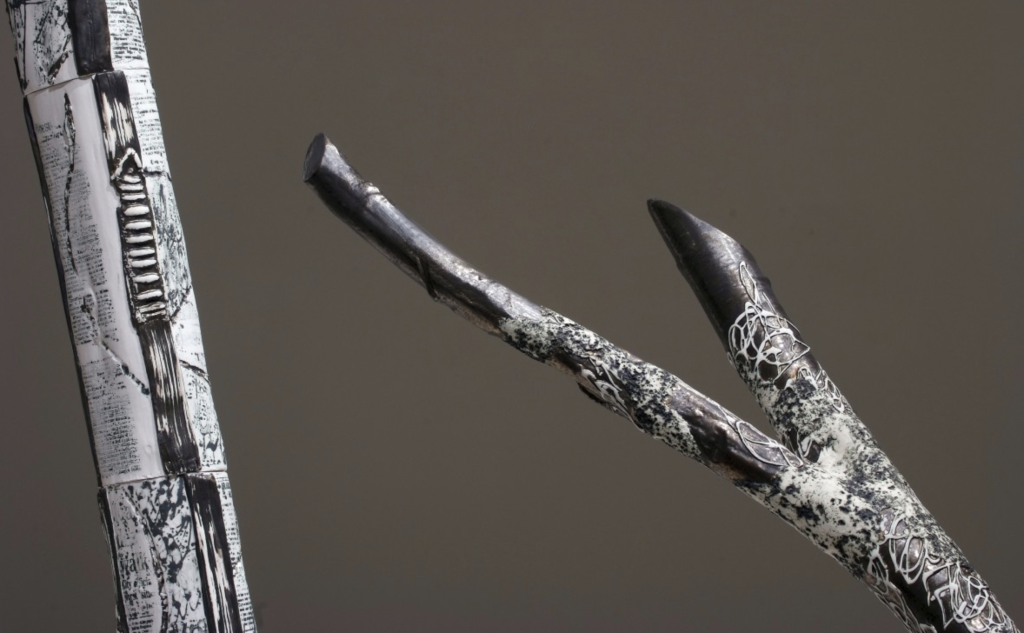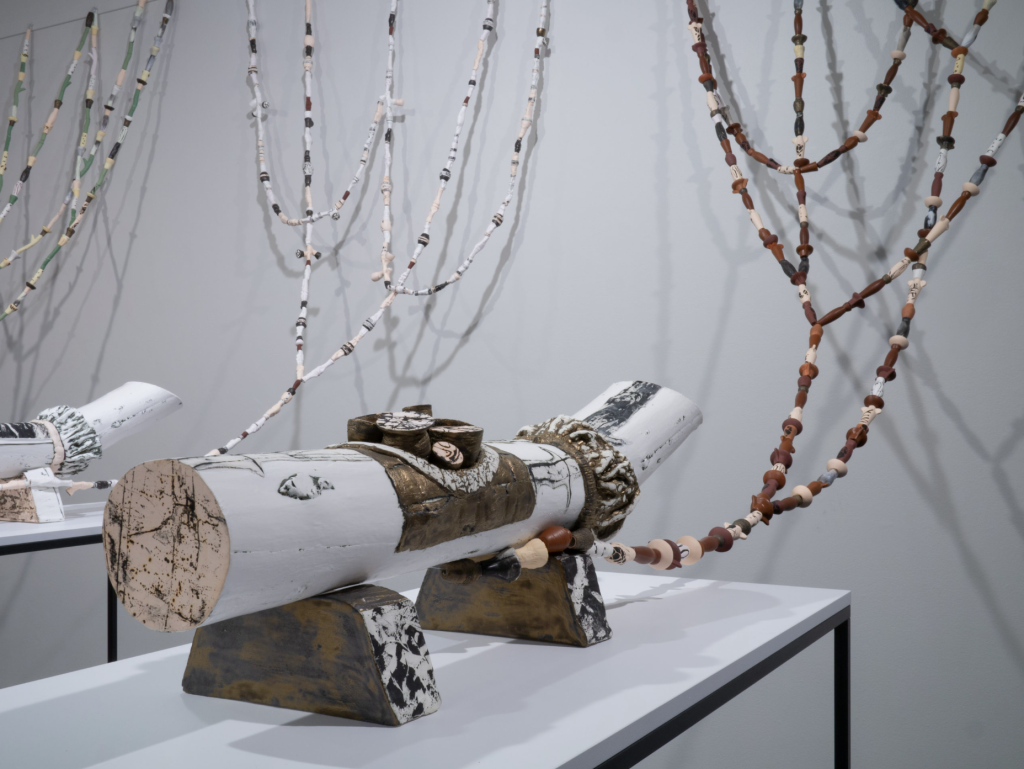
Winnipeg ceramicist Grace Nickel has known she’s a Governor General’s Award winner since November, but it was only revealed in March. “The whole thing is shrouded in secrecy,” she says a few days after the announcement. Nickel is the 2023 recipient of the Saidye Bronfman Award, which recognizes the work of individuals who have made significant contributions to the development of the fine crafts in Canada. Her career has mostly been based in Winnipeg, where she teaches in the School of Art at the University of Manitoba, but she spent two years in Halifax attaining her MFA at NSCAD, which she received in 2008. “I was there working with Sandra Alfoldy, she was a firecracker,” says Nickel. “She was larger than life, one of those rare people who’d walk into a room and it was completely lit up. The fit couldn’t have been better. It was also Neil Forrest and Walter Ostrom’s very last year—they were all on my thesis committee. I snuck in there and got all the heavyweights.”
Nickel’s $25,000 prize was spent researching Habanware, a rare Anabaptist pottery tradition, across Europe this winter (on the phone, she’s still jetlagged). The trip helped keep her mind off the big secret she had to hold for so long, and its weight. “For women in ceramics, women of my generation, it counts to have that recognition—it counts and I’m not taking it lightly at all,” she says. “It’s special. These things do not come along that often.”
This isn’t a lifetime achievement award, but it rewards your body of work so far. Are you thinking about your past any differently in the wake of it?
You’re submitting a representation of your entire practice, so that brings it back around for you. This might sound really strange to say—of course we progress, we evolve, we improve—but more and more it’s important to respect that early work as the artist who made it as well. It just isn’t inferior. That has been very important for me to see—I’ve had such a high, rigorous standard from the beginning, and a rigorous work ethic. I never think of this at all as an end, to me it’s just another marker. But it’s a major one.

You made three pieces inspired by the aftermath of Hurricane Juan, Point Pleasant Pilaster (2007), Devastated (2007) and Devastatus Rememorari (2008). What drew you to that work?
I arrived in 2006, and the hurricane had happened in 2003. Someone told me, ‘You won’t really notice it anymore, everything’s kind of fixed.’ But I’ll never forget the first time I walked into Point Pleasant Park—the devastation was palpable. Seventy thousand trees were down or damaged, but they don’t remove all that debris—they go in there and chop it all up so it decays and regenerates. It was stunning to me. It was beautiful because there was a lot of rejuvenation at that point, three years in, but there were also all these—what I couldn’t help but think of as—corpses.
I started thinking about these fragments and how could I rebuild. I started to make some single trees—you’re not allowed to take anything out of the park so I had to find some surrogates. I found some trees elsewhere that had been felled and chopped up. It’s a two-year program at NSCAD, it’s very short, so by the time I was nearing that stage where you have to make some decisions about your thesis exhibitions, I decided I would do a full-on tribute.

There’s something notable about making ceramic versions of wood, using one material to replicate another.
I do not like working with wood, it’s not malleable. Clay is so ornery—there’s that side of it, it’s hard to get something from start to finish that survives that you’re happy with it. That’s always the challenge with it.
There’s always all kinds of things going on in the kiln: the clay shrinks, the shrinking causes warping and cracking. Over time you learn quite a bit about how to mitigate a lot of those, but you know how to work with the materials. There’s a lot you can learn and apply to helping a piece to survive. That’s what I mean by it being ornery and challenging—it has to go through so many changes and it can trip you up at any one of them.
Even if you work with clay your whole life, there’s always a surprise every time you open the kiln. It took me a long time to embrace this, but the heat, the transition from clay to ceramics—you don’t get ceramics without firing it. It’s important to think of that as a medium in itself, and think about how you can actually use that heat as another kind of variable. Right now I’m completely engaged in glazing, and testing glazes and figuring out a whole new palette. It’s endless.
